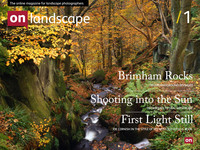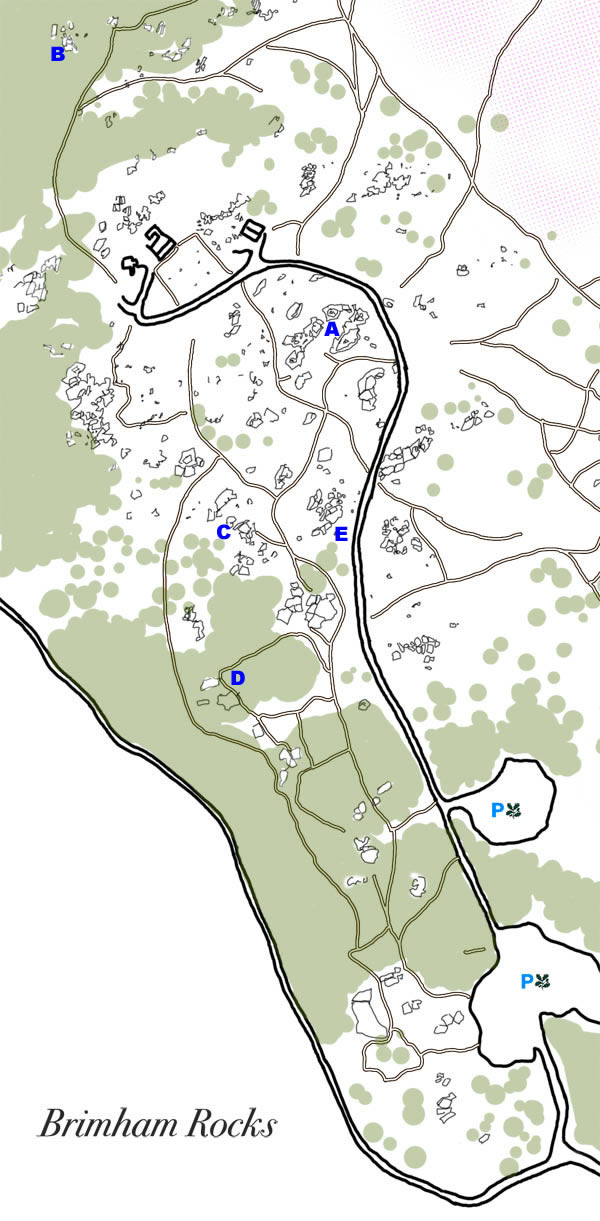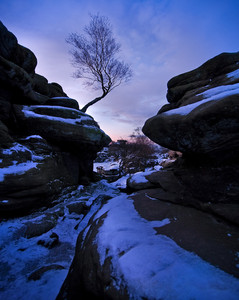In depth location guide

Tim Parkin
Amateur Photographer who plays with big cameras and film when in between digital photographs.
Brimham Rocks is one of the UK’s strangest environments. The victorians thought it was some form of Druidic place of religious significance, such is the astonishing variety of rock outcrops and features, and it was only in the 20th Century that we realised it was just a remarkable array of environmental erosion. "For Brimham, could it be transported to Salisbury Plain, would reduce Stonehenge itself to a poor and pygmy miniature". And it is spectacular, but it is also a surprisingly difficult place to photograph for somewhere with so much ‘material’.
As it’s one of the closest dramatic locations to me, I have visited it quite a few times and have been lucky to find one or two unique viewpoints. The following is my rough guide to the possibilities and potentials of the location.
Brimham Rocks OS Map on Multimap
The Location
Firstly, you should be aware that the location is *very* popular and is not particularly large for the numbers of people that visit it. I have seen over a hundred cars in the car park in a midweek. The best times to go are, unsurprisingly, first thing in the morning and last thing at night with the morning being the best for vantage and for having the place to yourself apart from the odd dog walker.
The car park at Brimham is quite often closed from dusk to dawn but if you arrive very early, you can typically park up just outside without blocking the entrance to the Park and the side road just next to it (if you do park here, please make sure you don’t block either road! It’s quite easy to accidentally obstruct the track on the left of the entrance). Also, if you can’t park here without causing an obstruction, you can always drive a little bit further north-east (about 200 yards) where there is a substantial parking area on the right hand side of the road.
Satellite view of Brimham, Google Maps
Located just north west of Harrogate, the site is a National Trust property and as such, prepare yourself for hefty car parking fees or, a lot better suggestion, buy a membership (you’ll recoup the cost once you’ve parked at three locations in a year). It is also a Site of Special Scientific Interest which covers the area of Brimham Rocks, Brimham Moor and Hare Heads (the north end of the site surrounded by the main road).
For the sake of these location guides, I’ve split the Brimham Rocks site into three areas. There is the main area that the general public visit which has quite substantial paths and includes the track to the visitor centre.
Photographing at Brimham Rocks
The typical photographic visitor to Brimham will take the main road path through the site all the way to the visitor centre, probably stopping to take a photograph of the wonderful formations to the right of the path show in the picture below and definitely stopping at the main enclosure of rocks where ‘that’ famous tree grows out of the side of a mass of gritstone.
They will probably walk to Idol rock and see the Druids Tablet and then walk over the western edge of the site, looking over toward Low Wood and Glasshouses and then return to the car park via the western path marked on the ordnance survey maps.
If they do this, they will definitely see some of Brimham’s interesting features but will miss out on many of it’s photogenic areas. There are many more paths through the site than appear on the ordnance survey map or on the site’s own maps. The main area people miss is just on and below the eastern crags. There is a path that follows the far edge of the site through some wonderful woodland and allows access to the bottom of the rocky ledges, an area that is probably more familiar to rock climbers than photographers and the general public.
For those of you that are after the 'hotspots' then take a look at the image above. Area 'A' is the classic 'tree sticking out of wall' shot that has been done more than a few times. It's worth a play with as there is definitely loads of potential around this area that hasn't been fully explored though. Here's my take on it.
Location marked as B on the map is well known through Joe's National Trust shot. It's the Druid's Tablet, take a look here. Next to this is the classic balancing stone, a good hundred tons of rock balanced on a backpack sized mound.
The area around C has some wonderful views, well worth wandering around at sunset. D has the winter sunset views and drops down into the craggy edges beloved of climbers. Finally, my favourite location for sunrise, location E is a group of rockets that are easy to climb and give you an amazing view over Brimham Moor with the best looking group of stones in the foreground. This time of year is perfect to capture the sunrise to the left of the rocks. Just have a look at these.
Brimham Rocks isn’t an easy place to photograph by any stretch of the imagination. Mostly because of all that wonderful variety compressed into a small area, it’s difficult to simplify things; sit in the middle of Brimham Rocks and you will easily end up with a complex mass of rocks and bracken. The key to getting good results is to work around the edges of the site or work with details. The far western edge, where the rocks drop away towards Glasshouses is an excellent choice for sunsets colour but also holds a valley towards the north west that fills with mist on cold mornings. The eastern edge is excellent for sunrise, especialy in Spring and Autumn.
I have created a google map that shows a sample of photographs from many of the areas on this site. The photographs are not intended to be great examples of composition but to inform as to what ‘ingredients’ the photographer might have to work with should they choose to visit these areas. I’ll be getting this map up on the website over the next few days (I’m not totally happy with the positioning of the photos yet).
I’ve also generated a set of 360 degree panoramic photographs that will hopefully give you a good idea of the types of environment that you are likely to encounter. This is live and you can visit it by clicking on the link below.
Brimham, a complex, frustrating place to photograph but with a bit of patience, a very rewarding challenge.
Geology
Although many Victorians were sure that the whole of Brimham Rocks was some sort of druidic temple to pagan gods (and without a strong geological understanding which would have to wait until the mid 1800s, it would be tough to explain some of the formations) the actual history of the rocks is natural but far from mundane. Even the late 1800s geologists got it wrong and thought that the tors of Devon, Yorkshire and Derbyshire were of coastal origin being worn down sea stacks. At the turn of the century, the formations were thought to be generated by some form of chemical weathering underground, and it was only in the 1960’s that geologists started to agree that most of these structures appeared when soil erosion revealed rocky outcrops and then freeze-thaw action worked on the structures to break down weaker areas, creating layers and clumps of rock. The extraordinary shapes that appear in Brimham, where large structures balance on tiny pillars such as Idol rock, are thought to be the result of the small area underneath the structure being compressed by the weight of the stone and hence becoming harder and resistant to erosion. This means that the non-load bearing material gets weathered away, leaving just the rock material that is holding the most weight.
The origins of the rocks are no less mundane, they being the layers of grit and sand that were layed down in the delta of a great river whose origins were in a mountain range that stretched down from Norway’s fjords through Scotland. The different layers in the rocks are the result of the changing flows of the water in the river delta, giving rise to multiple angles and textures of rock.



